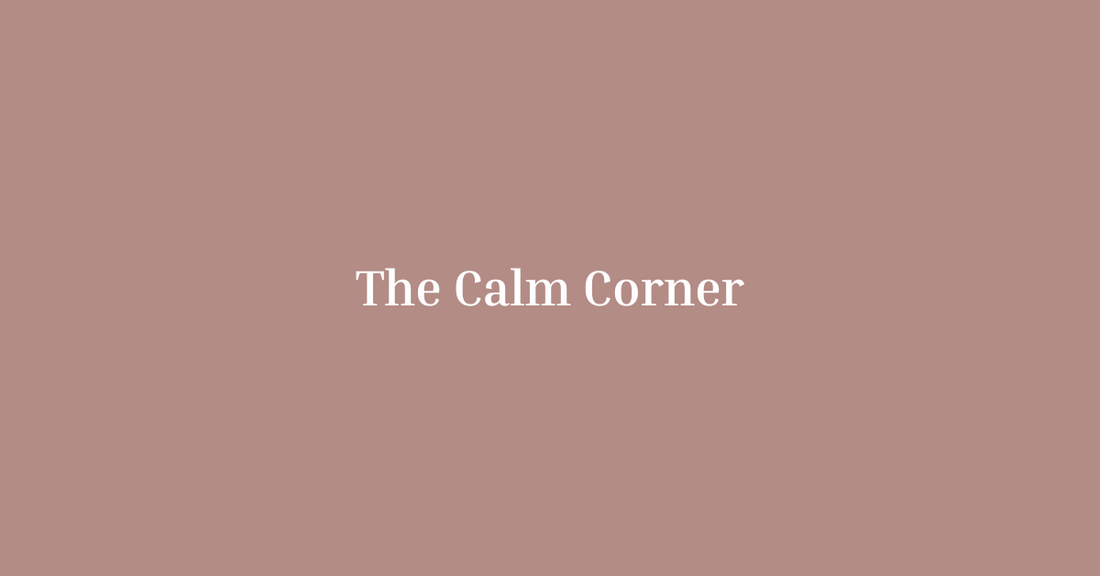
The Calm Corner: Creating a Space That Grows With Your Baby
Share
Forget the Instagram-perfect nursery with colour-coordinated stuffed animals and artfully arranged books your baby can’t reach. What your little one really needs? A calm corner; a flexible, sensory-friendly space that nurtures rest, play, and growth from newborn days through toddlerhood.
Think of it as a sanctuary within the nursery, built not just for aesthetics, but for rhythm, routine, and calm.
Why Create a Calm Corner?
Babies, and their parents, thrive in environments that reduce overwhelm and support transitions. A well-designed calm corner helps:
- Signal sleep time, even in a shared room
- Offer a soft landing spot after busy outings
- Encourage independent wind-down moments
- Support emotional regulation as baby becomes a toddler
Research from the Journal of Environmental Psychology shows that a thoughtfully designed sensory space can help reduce stress and improve mood in both children and adults.
Step 1: Choose the Right Spot
Look for a quiet nook in your nursery, bedroom, or living room—ideally away from windows, noise, and distractions.
A calm corner doesn’t need square footage. Even a soft rug in a corner with a few intentional elements can work beautifully.
Step 2: Focus on the Five Senses—Gently
Sight
- Soft, neutral tones (creams, taupes, sage) reduce visual overstimulation
- Avoid busy prints or harsh lighting
- A dimmable lamp or salt lamp can provide warmth without glare
Sound
- Consistent, low-frequency sounds signal calm (brown noise is ideal)
- A portable speaker like Shushiie allows you to customise and layer relaxing sounds for nap time or post-play wind-downs
Touch
- Include a plush play mat or small organic cotton rug
- Add textured elements like muslin cloths or soft knitted cushions
- Use gentle fabrics—nothing synthetic or scratchy
Smell
- Skip strong scents; instead, keep the area fresh with light ventilation or a drop of baby-safe essential oil (lavender or chamomile)
Taste
- For older babies and toddlers, the calm corner can be a place to explore quiet snacks like soft fruit or oat bars
Step 3: Add Simple, Evolving Elements
Newborn to 6 Months
- Floor space for tummy time
- Mirror for visual stimulation
- Shushiie or soft sound cues
- A low shelf with a few soft items
6 to 12 Months
- Add sensory baskets with natural materials
- A low bookshelf with a rotation of board books
- A fabric tunnel or cushion fort for gentle play
Toddler Stage
- Introduce mindfulness tools (a breathing pinwheel, a calm-down bottle)
- Add a “quiet box” with calming toys
- Include a cushion for self-directed moments after big emotions
Step 4: Use It Intentionally
The calm corner is not just for looks—it’s a tool. Build it into daily rhythms:
- After waking up
- Before and after outings
- Right before nap or bedtime
- During tantrums or overstimulation
Make it a space of positive association—never used for punishment or forced time-out.
Final Thought: It’s Not Just a Corner, It’s a Cue
When done well, a calm corner becomes more than a place—it becomes a pause button in your child’s day. A cue to breathe, unwind, and reconnect. And in the early years of chaos, that’s a gift for everyone in the home.
